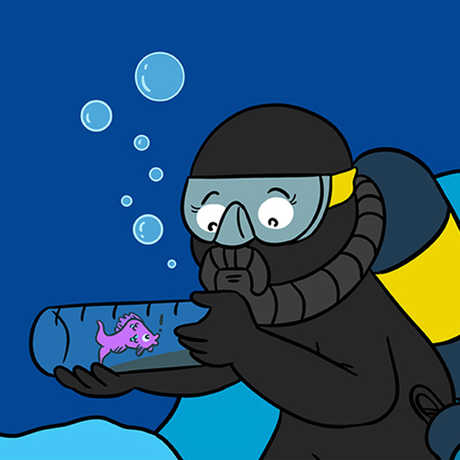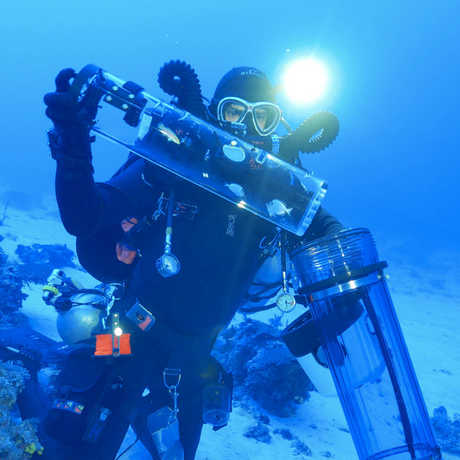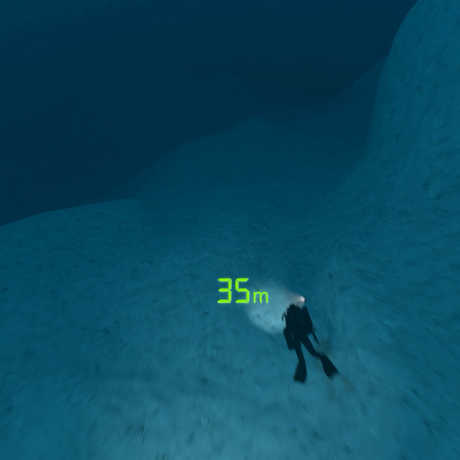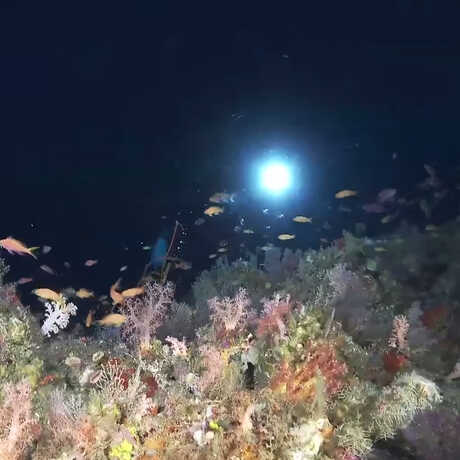Be dazzled by the brilliant colors of thousands of tropical fish swimming across your screen.
Plunge into the darkness with scuba divers as they explore ecosystems that few will ever see in real life.
About the Video Clip
Duration: 1:45 minutes
Grade Level: Appropriate for all ages; content connects to NGSS standards for grades 5 and above
Scientist explorers study deep reefs in a region nicknamed the Twilight Zone. Unlike shallow reefs, corals here survive with barely any light. Some species appear fluorescent at depth, which helps their embedded algae photosynthesize.
Plunge into the darkness with several scuba divers as they shine a light on sticky jellies, exploring ecosystems that few will ever experience in real life.
Student Article - The SubCAS: A Pressure Chamber For Fish

In this student-level article published in Frontiers for Young Minds, Academy scientists describe how they fashioned a special pressurized chamber that allows them to bring fishes from the deep Twilight Zone to the surface without harming them.
Frontiers for Young Minds provides a collection of freely available scientific articles by distinguished scientists that are shaped for younger audiences by the input of their own young peers!
Immersive Article - An Audacious Plan in the Twilight Zone

Experience what it's like for scientific research divers to go where almost no one else has gone—to great depths in the ocean where specialized SCUBA equipment is a must and new species await. In this immersive bioGraphic article, you can dive into tropical waters with Academy researchers and follow them as they make their way down to the Twilight Zone 300 feet beneath the surface and back up again.
Lesson Plan - Air Pressure, It's in the Bag

The pressure in the Twilight Zone 400 feet below the surface of the ocean is twelve times greater than air pressure at the surface! But what exactly is air pressure? In this activity for grades 6-12, students are asked to create a change in air pressure using a garbage bag and vacuum cleaner, then create an illustration, model or concept map that explains what is happening.
Connections to the Next Generation Science Standards
While this video doesn't necessarily cover the following standards in depth, it is a compelling resource you can use to supplement your curriculum that does.
Disciplinary Core Ideas
- 5-ESS2-1 Do you think coral reefs are a part of the geosphere or the hydrosphere, and why? How do coral reefs as solid structures influence the living system or landform shape around them?
- MS-LS2-5 Which design solution for saving the coral reefs will best maintain biodiversity and ecosystem services?
